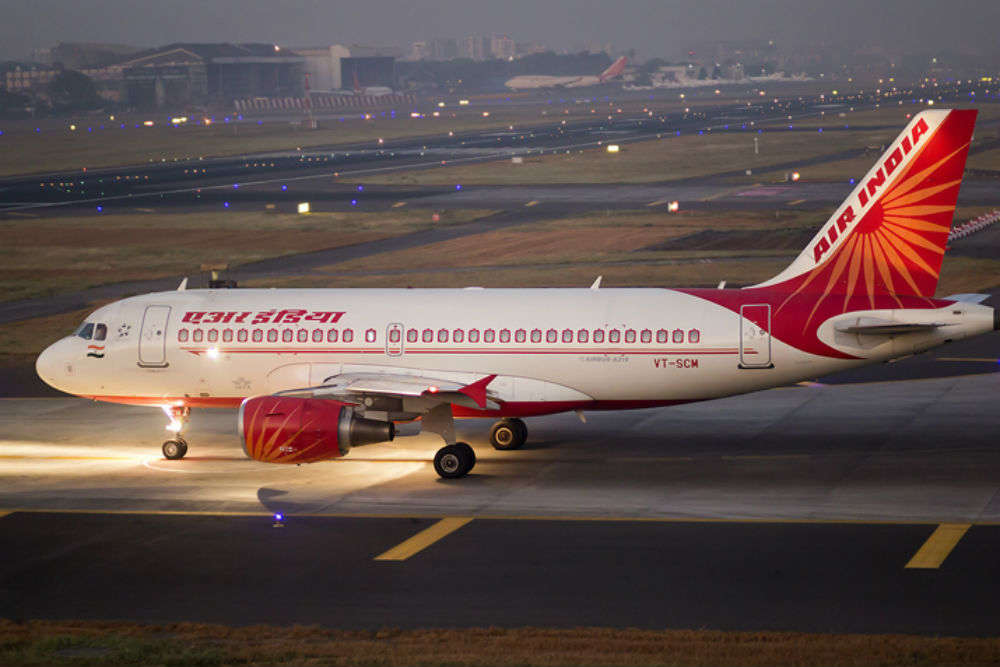The Government of India plans to offload 100% stake in its flagship carrier Air India while moderating the debt of the airline to Rs. 23,286 crore or $3.26 billion.
Announcing the intent, the government invited bids for the second time after an attempt in 2018, which was aborted. The last date for submission of bids is 17 March 2020.
This time round, the government has honeyed the deal by offering 100% stake in the airline while at once hiving off the carrier’s debt to a little under a third of the existing liability of Rs. 62,000 crore.

The current debt is mainly owing to aircraft bought against government guarantees, which will no longer be operational once the airline is sold.
Earlier, in 2018, the government had invited bids for sale of 76% in the airline, with the offer failing to elicit any response. In the earlier plan, the government was to retain about 24% stake in the company along with board membership. Besides, there was no proposal to cut down debt by any measure.
The Expression of Interest document states the government will absorb airline’s liabilities due to the Income Tax department, payments against customs duty, service tax owed to the Government of India, and all guarantee fees or penal charges, again due to the government.
In terms of the bidder’s eligibility, the government has also lowered the net worth benchmark from the earlier Rs. 5,000 crore to Rs. 3,500 crore.
In the bid document, the government also says that ownership and control of Air India will have to remain vested with an Indian entity, which effectively curtails the scope for any foreign bidder to participate in the bid.
The government also lays down that the new owner/s cannot change the ‘Air India’ brand name.
The carrier earned consolidated revenues of a little over Rs. 27,000 crore in 2017-18, with a loss of Rs. 5,799 crore. In fact, finance or interest charges came in excess of nearly Rs. 4,000 crore during the period. Consolidated debt on the books stood at Rs. 58,000 crore, now revised to Rs. 62,000 crore.


Air India’s iconic Maharaja mascot, for years the symbol of the national carrier, underwent a sea change in 2015 when the old, venerable maharaja was transformed into a hipster taking a selfie, which invited widespread derision on social media. The original ‘Maharaja’ was co-created by Bobby Kooka, then commercial director of Air India, and Umesh Rao, an artist with J. Walter Thompson Limited in 1946. Kooka then famously said: “We call him a Maharajah for want of a better description. But his blood isn’t blue.”
Air India, formerly Air-India (with a hyphen), was founded by the legendary JRD Tata, the Tata Group’s Chairman Emeritus Ratan Tata’s uncle and predecessor, in 1932. It was then called Tata Airlines.
JRD opened the first service in 1932, himself flying the first flight between Bombay (now Mumbai) and Karachi in undivided British India.


In 1953, the Government of India, under Prime Minister Jawaharlal Nehru, nationalised all Indian airlines by forming two corporations. One was meant for domestic service and was called Indian Airlines Corporation and was formed by merging Air-India Limited with six lesser known airlines.
The second one was for the international sector and was called Air-India International Corporation. In 1962, the international carrier’s name was shortened to Air-India. In 2005, Air-India was dehyphenated to help the airline gain an edge in computerised booking searches.
The Tata Group is likely to make a bid to buy Air India, which JRD had built assiduously brick by brick. “JRD micromanaged the carrier’s operational aspects. He would take great personal care of passengers, even when flying as a passenger himself.
“Many a time, he wandered about on flights, making notes of tiny details that needed to be fixed, from the level to which wine was poured into a wine glass to the hairstyle of air hostesses. If he saw a dirty airline counter, he would shame everyone by requesting a duster and wiping it himself. On one occasion, he rolled up his sleeves and helped the crew clean a dirty aircraft toilet.


“From the inside decor to the colour of the air hostess’ saris; from wordings on Air India hoardings to the availability of toilet paper in lavatories on-board, JRD set high benchmarks in hands-on leadership. He once remarked that to attribute his interest in airlines to his interest in air hostesses was only a slight exaggeration,” says Shashank Shah in his The Tata Group: From Torchbearers to Trailblazers, published in 2018.
Should the Tata Group manage to buy Air India, history would have made a full circle in the story of Indian aviation.







